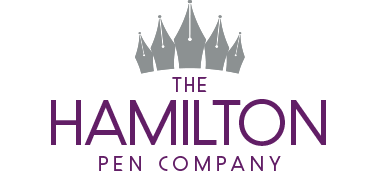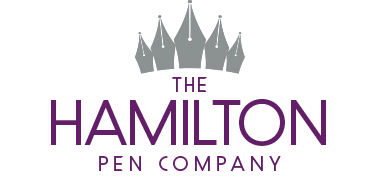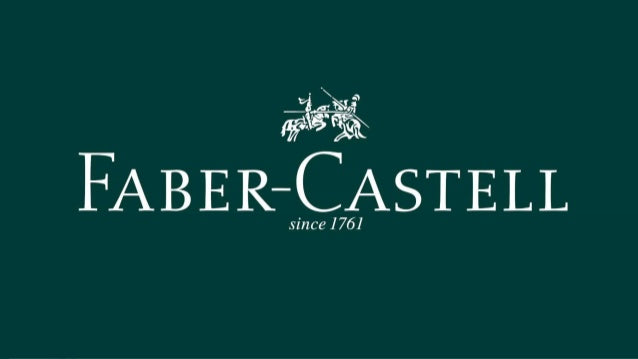This one goes out to all the PENthusiast-cum-historians!
Many of us have come across the rich and dynamic histories of the luxury pen powerhouses. From Parker in 1888’s Wisconsin; Rhode Island's Cross, created in 1846; Mont Blanc, established in 1906 in Hamburg; the Italian stallion that is Montegrappa - founded in 1912; and the Swiss Caran d’Ache joining the ranks in 1915 - to name but a few. But one history which really stands out is the Faber-Castell epic, which began in the mid-18th Century and continues to this day.
Detailed by prominent publications such as; CNBC, Forbes, The Wall Street Journal and even Martha Stewart, Faber-Castell presents a diverse and intriguing history. But what makes the history of Faber-Castell so compelling? The history is rife with; family feuds, stories of underdogs come good, global influence and ultimately the bond of family. But more than that, the Faber-Castell story not only outlines a family history, but also a business which was able to sustain itself from its emergence in an agrarian society into the digital age of the 21st century.
Although the history of Faber-Castell has been told many times for those with an interest in the history of pencil manufacturing, here we merely skim this - inviting you to explore the web for some of the many intriguing articles for your own enjoyment - rather we focus in brief on this aspect, to provide historical context for looking at how the Faber family emerged as one of the leading pen manufacturers globally.

Image Credit: The Palimpsest
Once Upon a Time ...
The year ... 1761.
The location ... near Stein on the outskirts of Nuremberg, Germany.
Our protagonist ... Kasper Faber, a 31 year old carpenter and entrepreneur. Little did he know he was founding a company that would be run by nine generations of his descendants and would go on to employ thousands of people worldwide!
The areas surrounding Nuremberg were an incubator for pencil manufacturing during this period and in the formative years of Faber’s history. Many factors allowed for this growth but Fabers timing was especially fortuitous due to the emancipation of the serfs in the coming decade which would promote a rapid growth in land and business ownership opportunities for the lower classes. Furthermore, the era saw the early adoption of the free market ideas of Adam Smith which were working their way around europe. These were also the early days of the German Enlightenment period which saw composers, artists and intellectuals establishing Germany's place in cultural history and with these pursuits comes a need for the best in writing and artistic equipment. It is not difficult to imagine Bach, Mozart and Haydn composing with furrowed brow and pencil clenched between teeth, or Immanuel Kant philosophising reason and morality waving his writing instrument above his head with enthuse. Perhaps we think of Newton's rival, Gottfried Leibniz, working through equations and designing the early concepts of the calculator, huddled over his desk surrounded by a battlefield of used-up pencil stubs. Or maybe it's the poetry and plays of Freidrich Schiller dancing to life through the musical scratchings of a Faber pencil that we envision. These were not remotely in the mind of Kasper Faber whilst he was producing pencils in his home workshop for his wife to sell at local markets. Faber, like many carpenters, joiners and cabinet makers of the time, took to making pencils as a side business to support his family - only Kasper was not just any carpenter, he was a man with a vision.

The history of Faber-Castell is as much a story about the environment and landscape as it is its characters. Kasper Faber began producing pencils out of his workshop, experimenting with solutions to the nature of graphite to crumble and break. The result - by grinding the graphite and reforming the pencil core using Sulfur, Antimony and Resin, the graphite was less prone to breakage whether unhoused or fully placed as a core in wood as was becoming the fashion. In 1784, Kaspar’s son Anton Wilhelm took over his father's craft and incorporated the family business, branding it A.W.Faber, and using his father's savings, relocated operations to a new headquarters which still hosts the company base of operations some 258 years later!

The early generations of the Faber family experienced reasonable success from the pencil making business, allowing for growth year after year, however the real architect of the triumph of this company comes in the form of Kasper’s grandson, Lothar Faber. Lothar was a man of aesthetic pleasures and introduced beautiful packaging and marketing to the Faber products as well as investing in the employees and well being of those employed by the company.
Nuremberg, by the late 19th Century, was renowned as the world's centre of pencil manufacturing with 25 factories outputting approximately 250 Million pencils per year. A.W.Faber was the largest of these factories with a workforce of almost 2000 personnel manning the factories and a further 300 home-based workers. In keeping with the family values promoted by the Fabers before him, Lothar sponsored the construction of housing for his workers, built the first kindergarten in the area and even provided a church. His philanthropic activity and dedication to local development earned him the inheritable title ‘Freiherr’ and later the title ‘imperial counselor to the Bavarian Crown’. This peerage from the King of Bavaria saw him leave behind Lothar Faber and become Lothar von Faber as a sign of his nobility. This title didn't distract from his main mission in life...to become the world's greatest pencil maker.
In 1874, Lothar von Faber petitioned the imperial parliament to protect and recognise brand names, as his success had led to many imitators using his name which had become synonymous with quality and craftsmanship. The following year these suggestions were enacted and so paved the way for trademark law in Germany. Lothar was succeeded by his wife and then later granddaughter, Ottilie, as his only male heir, Wilhelm, had died before his own death in 1896. As a new member of the nobility, Ottilie married into one of the oldest families of Bavarian nobility when she wed Count Alexander zu Castell-Rüdenhausen.
Count Alexander took on a shareholder role and brought with him the Castell name and influence.

And so marched on time, with the rhythmic pounding you could expect to hear from the mounted knights on the newly created crest of Faber-Castell, jousting with pencils for the delight of a growing global client base. In the early part of the 20th Century, a castle was renovated in Stein to house the Faber-Castell family and headquarters, only a castle was fit for the pencil king!

As with the rest of Europe, the world wars took their toll on the family and business of the Faber-Castells. During WW2, Count Roland von Faber-Castell was at the helm of the ship until his drafting to the German army left the company under the leadership of the first out-of-family CEO, who was appointed by the Nazi party. During this time, Count Roland’s enterprising wife Nina managed to transform the company to sole proprietorship and reclaim ownership of the company, which was renamed A.W. Faber-Castell by 1942.
The family Faber-Castell have existed alongside major points in history and have played a part in shaping the rich culture of our humanity, without Faber-Castell would the works of Vincent van Gogh, Paul Klee, Oskar Kokoschka, Neo Rauch and Karl Lagerfeld have the same feel or dynamic palette? Who knows! The history of Faber-Castell is truly a tale of rags to riches and is well documented through industrialism, to the split of the brothers Lothar, Eberhard and Johan into subsidiaries in Germany and the USA, to the use of the Stein headquarters by journalists during the Nuremberg trials (including Ernest Hemingway and John Steinbeck!), all the way to the engagement with global environmental issues worldwide and the innovations presented to the world through its writing instruments and stationery products long into the digital era of the 21st century

From Graphite to Ink...Faber-Castell and Pens
However, It is with the brother of Lothar that our journey takes a sidestep. Yes, the history is dominated by the manufacturing history of the pencil but if we take the short journey from Stein to Nuremberg itself, we see the birth of the craft of pens within the Faber family.
Johan remained in Germany after his brother Lothar took the family business on, and Eberhard migrated to New York to manage the US subsidiary. Johan initially created his own company but it became a family limited partnership in 1885 as Johan A. Faber A. G. The main branch retained a focus on the manufacture of pencils, although a hard rubber safety fountain pen can be traced back to 1908. The fountain pen was imprinted with the A.W.Faber-Castell brand however, given the similarity of filling mechanisms, it is often attributed as a commissioned production by Kaweco who were also based in Germany at the time.
During the 1920’s, Johan Faber began the production of fountain pens, these were predominantly hard rubber safety pens however some metal models were also produced. These bore his company logo of crossed hammers and had his name imprinted on the caps. Later in the 1920’s a range of piston fillers with rounded ends and four banded caps began production.
In 1932, Faber-Castell was directed by its seventh generation family member, Count Roland von Faber-Castell, son of Count Alexander, who maintained the traditions set out by his Grandfather, Lothar, and Great Uncle, Eberhard, by creating and marketing products for young people. He created a series of boxes of pencils decorated with folk figures, mythical creatures, animals and even Santa Claus. After WW2 and the merging of all the Faber subsidiaries under the Faber-Castell brand, a trend emerged for ballpoint pens which Faber-Castell was quick to engage with. The ballpoint pen was considered serious competition for the fountain pen and so A.W. Faber-Castell, wanting to remain competitive in a growing market, was the first German manufacturer to include ballpoint pens in its range, advertising them with a series of colourful contemporary images. In 1950 they introduced the famous torpedo shaped ballpoint pen known as the ‘gentleman’ which was released in black or grey pearl and silver. This pen was revolutionary for its time with features such as; a butterfly clip, extended ink reservoir due to part of the mechanism lying in the knob and an opaque body allowing for ink level viewing and etchings to improve grip.
In 1950, Faber-Castell acquired the Osmia company and started manufacturing fountain pens under its own name. By the 1960s, the Osmia trademark was removed and adaptations were made to the design with hooded nibs, plastic models and transparent ink viewing sections becoming the norm. A luxury line branded ‘66’ was released which included a rolled gold cap and gold nib complimented by richly coloured bodies. A mid-range model was also released, known as the ‘Faber-Castell Progress’ it was produced in three versions: the ‘77S’ in plastic and steel, the ‘55S’ with a silver cap and steel nib, and the ‘55G’ with a gold nib. Additionally a model aimed at students was released.
Count Anton-Wolfgang von Faber-Castell replaced his father's role in 1979 and embedded the philanthropic nature of Lothar back into the company with environmental issues and social issues being addressed as a priority by the company. A plantation project was created in Brazil and Columbia to embrace ecological sustainability and positive social impact.
After the late 1990s, Faber-Castell resumed the new design and production of fountain pens and added a sub-brand (Graf von Faber-Castell) for its prestigious line and limited edition products.
A Company for the 21st Century
Through the 2000s a continued dedication not only to environmental and social issues was maintained but also a dedication to the family history of the company in its brands core values. Writing instrument craftsmanship remains a priority regardless of the size of the company.
The company defines its ‘brand essentials’ as the core values of Faber-Castell and they address competence & tradition, outstanding quality, innovation & creativity, and social & environmental responsibility.They maintain a connection to their roots, history and experience through entrepreneurial spirit, continued development of skills and craftsmanship, and high levels of credibility built through global communication and networks based on fair partnerships.
One thing that never changes with Faber-Castell is the high-class quality of their products and services, they pride themselves on respecting the needs of regional markets and of having a big-picture consideration of global requirements. All of this alongside the characteristic, timeless and striking design of all of their products.

Drawing back on the humble beginnings of Kaspar Faber and his innovation in graphite processing, Faber-Castell continues to offer innovations and solutions to writing instruments’ needs stimulating creativity with interdisciplinary teams, open and transparent working as well as an inclusive company which respects and encourages ideas from its entire workforce.
Being a global leader in the production of pens and pencils comes with it an obligation and commitment to people and the environment, something which Faber-Castell has been an industry leader in since the 1970’s. Faber-Castell promote the prioritisation of environmentally friendly materials and processes, as well as their contribution to preservation with programmes to prevent deforestation and negative impact on the environment.
Faber-Castell at Hamilton Pens
At Hamilton pens we appreciate great craftsmanship in the writing instruments we supply, as well as a great history. We are proud to offer a variety of Faber-Castell products knowing we get to be a small part of stationery history and also get to support a company dedicated to both tradition and future sustainability. Below is an overview of the ranges we offer and some of our favourite aspects in the collections.
AMBITION
The AMBITION range promotes a dexterous connection with the writing instrument of choice. With a sense of precision, sensitivity to material and symbiosis with fresh and vibrant colour designs. The AMBITION range provides an inexpensive opportunity to own a durable, stylish writing piece. The matte stainless steel or chrome appointments are often paired with unusual and elegant wooden barrels which present an eye catching design. Clean lines, sophisticated simplicity and quality materials drive the design of these highly sought-after writing instruments.
A particularly beautiful example of this range is the Faber-Castell Ambition ballpoint pen in Cocos - Cocos has a barrel produced from exquisite coconut wood which has a slight zebra graining complemented by highly polished chrome appointments. The Ambition ballpoint pen has a smooth twist action mechanism, a spring loaded metal pocket clip and is presented in a Faber-Castell gift box it is available as a matching fountain pen, rollerball pen and mechanical pencil

The latest Special Edition Faber-Castell Ambition fountain pen in OpArt Pink Sunset has a deep pink fine guilloche engraved barrel, complemented by highly polished chrome appointments. This beautiful fountain pen has a polished stainless steel nib available in a choice of sizes providing a satisfying balance of ink-flow and surface tension that makes this piece a delight to write with. As with other Faber-Castell fountain pens, the special edition releases can be used with standard sized ink cartridges or an ink converter. Alongside the Pink Sunset model, Faber-Castell released a Blue Lagoon limited edition which features a rich blue fine guilloche engraved barrel, complimented by highly polished chrome appointments. These are a nod back to the early designs for fountain pens which drew on elegant colour palettes and striking features set in precious resin. The AMBITION collection are distinguished by distinct aesthetic designs combined with professional functionalism.

E-MOTION
The cigar-like, chunky shape of the E-MOTION range is ergonomically crafted to sit in the hand comfortably and combines an outstanding writing experience with refined aesthetics. The E-MOTION range is available in contemporary yet classic embellishment combining black and chrome detailing in matte and gloss options which is truly striking. Subtle parquet designs or traditional guilloche patterns are laser engraved in the bodies of these handsome pieces adding to the desirability of the E-MOTION range. The skilled craftsmanship refined over generations paired with innovative techniques can reveal captivating effects in quality materials which is demonstrated in the precious resin range, complimented by glossy chrome elements or stunning matte detailing - Faber-Castell have created a simply beautiful object in the E-MOTION collection.

One such example is the Faber-Castell E-MOTION fountain pen in Pure Black which has a breathtaking impact. Its lightweight aluminium barrel is perfectly balanced and presented in matte black anodised and engraved guilloche, crowned with a matte black cap engraved with the famous Faber-Castell logo. With its dynamic shape, deep black tone and curved clip, this piece has a masculine look and feel, guaranteed to mesmerise old-school and contemporary connoisseurs alike.

ONDORO
The ONDORO collection is a superlative example of design and function. The unusual contours of the design are immediately striking and hark back to the historical roots of the company in pencil making - as an early design was to shape pencils in hexagonal housing to prevent them rolling away from the workspace. This nod to the past is reinvigorated in high-gloss, precious resin, framed with chrome-plated elements illuminated in a series of bold hues. The design of the ONDORO allows for a stunning appearance but also a world-class writing experience as the hand delights in the shapes and lines of the barrel, allowing for optimum grip and dynamic movement. A particular favourite in this range is the Orange barrel which adds a fun pop of colour to any collection. The Faber-Castell ONDORO range also provides a more organic design in the form of its smoked oak barrel which provides the classic experience of real wood comfort and a dignified form.

From Workshop to Worldwide - A Lesson in Longevity
So, from humble beginnings in a workshop near Stein to a now global leader recording revenue of 667 million euros in 2016/17, with sales bases in 22 countries, manufacturing plants in 9 countries, and employing over 8000 people worldwide - Faber-Castell is a beautiful dance of tradition and modern innovation which can be seen in the company ethos as well as the products they bestow on the world. Beyond all measures, the products at Faber-Castell are highly celebrated for their quality, workmanship and the experience placed into every pen, pencil, brush or ruler. Faber-Castell uses the highest grade products from sustainable sources and invests in world class designers which keep the heart and soul in these beautiful pieces. A long history of passion and creativity exists across the products which not only make these objects highly desirable for writing instrument connoisseurs and artists alike, but much in the way Lothar Faber envisioned an egalitarian approach to social issues, the Faber-Castell ranges are accessible to all through inexpensive options as well as the delightfully extravagant investment pieces. Through highs, lows, periods of war, the joys of peace and a whole lot of history, Faber-Castell sits proud atop the turrets of the castle in Stein proudly watching over the nine generation dynasty that grew from one man's humble vision of creating the best pencil he could.
Images from The Faber-Castell family history



